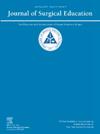了解2023年和2024年普外科手术匹配周期中的排序和匹配行为:一种程序信号方法
IF 2.1
3区 医学
Q1 EDUCATION, SCIENTIFIC DISCIPLINES
引用次数: 0
摘要
目的普通外科(GS)在2022年至2024年的应用周期中采用静态信号实践,每个申请人有5个信号。先前的研究表明,信号可以提高GS申请人获得住院医师面试的可能性。了解程序信号与排名和匹配结果之间的关系。设计:对2023年和2024年比赛数据的分析检验了信号与三个主要结果之间的关系,这三个结果是:列入项目的排名顺序列表(ROL),列入项目的竞争部分,以及匹配。一个多层次的模型被用来探索不同的因素如何影响申请人被纳入一个项目的ROL的几率。本研究由NRMP、AAMC和NBME合作完成。参与者为参加2023 (N = 3903)和2024 (N = 5057)比赛周期的住院医师。结果:发出信号增加了被排名的几率,发出信号的申请人被竞争排名和匹配排名的比例更高;然而,ROL上的大多数人以及匹配的人都没有发出信号。当申请人发出一个程序信号(OR = 5.63,95% CI[5.31, 5.98]),与程序来自相同的状态(OR = 3.52,95% CI[3.35, 3.70])或第一步得分高于平均值一个标准差(OR = 1.77,95% CI[1.74, 1.81])时,排名的几率会增加。与美国IMGs相比,高信号应用比(OR = 0.76,95% CI[0.71, 0.80])和骨科医学博士(OR = 0.50,95% CI[0.48, 0.53])或国际医学毕业生的排名几率较低(OR = 0.11,95% CI [0.10, 0.13]);非美国img: OR = 0.11,95% CI[0.09, 0.12])到美国md,尽管所有申请人都受益于信号的使用。虽然在GS中,信号并不是排名、竞争排名或与项目匹配的必要条件,但那些发出信号的人排名和匹配的比例更高,信号对ROL纳入的影响最大。本文章由计算机程序翻译,如有差异,请以英文原文为准。
Understanding the Ranking and Matching Behaviors During the 2023 and 2024 General Surgery Match Cycles: A Program Signaling Approach
Objective
General Surgery (GS) employed a static signaling practice with five signals per applicant in the 2022 to 2024 application cycles. Previous research demonstrated that signaling enhances a GS applicant's likelihood of being granted a residency interview. To understand the relationship between program signaling and ranking and matching outcomes in GS.
Design
The analysis from the 2023 and 2024 Match data examined the relationship between signaling and three primary outcomes—inclusion on a program’s rank order list (ROL), inclusion on the competitive portion of program ROLs, and matching. A multilevel model was utilized to explore how different factors impact an applicant's odds of being included on a program's ROL.
Setting
This study is a collaboration between the NRMP, AAMC and NBME.
Participants
Participants are medical residents who participated in the 2023 (N = 3903) and 2024 (N = 5057) Match cycles.
Results
Signaling increases the odds of being ranked, and applicants who signaled had higher percentages of being ranked competitively and matching; however, the majority of those on the ROL and who matched did not send a signal. The odds of being ranked increase when the applicant signals a program (OR = 5.63, 95% CI [5.31, 5.98]), is from the same state as the program (OR = 3.52, 95% CI [3.35, 3.70]) or has a Step 1 score one standard deviation above the mean (OR = 1.77, 95% CI [1.74, 1.81]). The odds of being ranked are lower for programs with a high signal-to-application ratio (OR = 0.76, 95% CI [0.71, 0.80]) and for Doctor of Osteopathic Medicine (DO) (OR = 0.50, 95% CI [0.48, 0.53]) or international medical graduates compared (US IMGs: OR = 0.11, 95% CI [0.10, 0.13]; Non-US IMGs: OR = 0.11, 95% CI [0.09, 0.12]) to U.S. MDs, though all applicants benefit from the use of signals.
Conclusions
Although signaling is not a requirement to be ranked, ranked competitively, or matched to a program in GS, those who signaled were ranked and matched at a higher percentage, with signals having the strongest effect on ROL inclusion.
求助全文
通过发布文献求助,成功后即可免费获取论文全文。
去求助
来源期刊

Journal of Surgical Education
EDUCATION, SCIENTIFIC DISCIPLINES-SURGERY
CiteScore
5.60
自引率
10.30%
发文量
261
审稿时长
48 days
期刊介绍:
The Journal of Surgical Education (JSE) is dedicated to advancing the field of surgical education through original research. The journal publishes research articles in all surgical disciplines on topics relative to the education of surgical students, residents, and fellows, as well as practicing surgeons. Our readers look to JSE for timely, innovative research findings from the international surgical education community. As the official journal of the Association of Program Directors in Surgery (APDS), JSE publishes the proceedings of the annual APDS meeting held during Surgery Education Week.
 求助内容:
求助内容: 应助结果提醒方式:
应助结果提醒方式:


